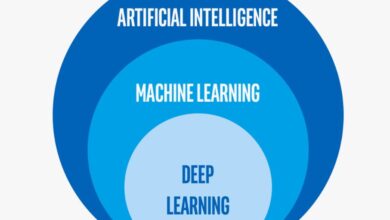Synthetic data is intentionally created data that resembles actual data yet differs. Synthetic data, in contrast to real data, is unaffected by privacy and security issues, making it safe for developers, organizations, and academics to use for a variety of tasks.
What is Synthetic Data?
Data that is generated by a computer program rather than being based on actual occurrences or phenomena is referred to as synthetic data. The program starts by identifying the statistical characteristics, relationships, and trends in the sample data. Once taught, the generator can produce synthetic data that are statistically identical.
The beautiful thing about synthetic data is that it behaves just like real-world data would when put through a model or used to create or test an application. Whether in computer games like flight simulators or scientific models of everything from atoms to galaxies, synthetic data has been employed for years.
Is Synthetic Data Variable in Any Way?
Yes! Synthetic data differs in several ways, including:
• Text Data: In NLP applications, synthetic data may take the shape of text that has been artificially generated.
• Tabular Data: For use in regression or classification tasks, this type of synthetic data consists of data that has been intentionally created to closely resemble real-world blogs or tables.
• Media: For computer vision applications, this could include animated GIFs, videos, or music.
What is a Synthetic Dataset, and why is it needed?
A synthetic dataset, to put it simply, is a collection of data produced by AI algorithms as opposed to actual data. Synthetic datasets are typically created for software testing and quality control. The synthetic dataset’s ultimate objective also includes being adaptable and durable enough to help develop machine learning algorithms.
How Is Synthetic Data Created?
The deep generative algorithms that use historical data as a model to learn all the correlations, statistics, and structures are entirely responsible for this. Once trained, they can then produce new data that is exactly like the original data they learned from.
Methods for Generating Synthetic Data
- Picking Numbers at Random from a Distribution
This method is well-liked for creating synthetic data compared to conventional machine learning methods because it merely selects sample numbers from a distribution. Additionally, this method can produce a curve that is only loosely based on real-world data because it doesn’t incorporate insights into that data.
- Models based on agents
The creation of individual, talkative agents is required for this simulation technique. These agents could be computer programs, cells, or even people. In a complex system, interactions between these agents are investigated.
- Generative Models
The most sophisticated technology for creating fake data is generative modeling. Deep learning typically uses generative adversarial networks (GAN) or variationally autoencoders (VAE) to create artificial data. Unsupervised machine learning models called VAEs use encoders and decoders to process data. Both networks compete with one another when it comes to GAN models. The second network discriminator acts by comparing the created data with a genuine dataset while analyzing the fake dataset, while the generator generates synthetic data.
It’s important to avoid over fitting the original data when creating synthetic data. Sometimes, overly intelligent AI systems unintentionally generate new data points. A proper quality check-and-balance is therefore required. Open-source data generators often require a lot of upkeep, but commercial solutions are more durable and include options that have been quality-checked.
Synthetic Data Types
Data scientists utilize synthetic data to protect sensitive information while maintaining all the crucial statistics from actual data, revolutionizing the field of data science. There are typically three main categories of synthetic data:
- Complete Synthetic
To generate realistic parameter estimates, the data-generating program recognizes and examines real-world data features, such as feature density. Then, it uses generative techniques to produce artificial data based on these estimated feature densities. As the name implies, this data is entirely synthetic and has no remnants of the original data. This sort of synthetic data offers strong privacy protection because genuine data is not used but at the expense of decreased data accuracy and truthfulness.
- Partially Synthetic
Data scientists can create partially synthetic data with some of the original data’s features by using both model-based and imputation methods. This method completes the gaps in the data and permits the permutation of unstructured data to increase diversity. Enables the replacement of specific features with completely new yet realistic values. Additionally, partially synthetic data is frequently used to disguise high-risk or privacy-sensitive information in structured data with privacy limitations to protect it.
- Hybrid
While providing a high level of utility and privacy protection, it delivers the advantages of both partially and fully synthetic data. This type of synthetic data only has one disadvantage: it uses more memory and processing power.
Synthetic Data’s Fundamentally New Business Applications
Since synthetic data is an industry-neutral solution, it may be used in every sector, including banking, healthcare, insurance, and telecommunications. The most common applications for synthetic data are dialogue processing, self-driving cars, and chatbot creation, with many more to come.
- Banking and Finance
In the business world, departments frequently function independently, dividing those who give the data from those who use it. Implementing data is difficult, though, due to this outmoded organizational framework. Furthermore, the relevance of cybersecurity has increased as a result of rising demands for privacy and customization. These and other urgent issues could be resolved with synthetic data.
- Communication
Telecoms must address several issues at once. For instance, declining profitability, stringent rules, and rising customer expectations. Additionally, there is a huge need in the telecom industry for seamless data sharing. You can quickly access GDPR-compliant substitutes with synthetic data. This would enable the telecom industry to generate income in new ways and further cut operational costs.
- Medical Care
For building models and datasets to assess health conditions without actual data, the use of synthetic data is fantastic. Artificial intelligence (AI) models are trained in medical imaging while taking extra care to protect patient privacy. Additionally, the most recent trend suggests that artificial data may be used to forecast disease trends.
- The Auto Industry
The well-known self-driving cab business trains its robot cars using fake data. Its in-house deep recurrent neural network can identify both good and bad driving conditions. To ensure passenger safety, the cabs undergo training using both labeled synthetic and real-world data. The vehicles can recognize things on the road and adhere to traffic laws thanks to the training data.
- Manufacturing
Manufacturing uses artificial data for predictive maintenance and quality control. Another excellent application for artificial consumer product group (CPG) datasets in the manufacturing environment is the generation and testing of various supply chain scenarios.
- E-business
Synthetic data assist e-commerce companies in training their machine learning algorithms on big training datasets produced with synthetic data, which helps with everything from optimizing price structures to demand to forecasting, assort planning to inventory management. Additionally, the company lacks access to huge datasets and is concerned about privacy; a solution might be generated data.
- Farming
Applications used by agriculture professionals to estimate crop yield, identify crop diseases, identify seeds, fruits, or flowers, and track plant growth benefit from synthetic data. Additionally, you can develop a digital twin of a field experiment to examine other elements like the type of soil or the climate. You can use these variables to test whether these conditions would hold up in actual field tests.
- Social Media
Political propaganda, trolls, and fake news are all over social media networks and platforms. Testing with fictitious data in this context guarantees that content filters are adaptable enough to deal with cyber-attacks and fake news.
Nevertheless, it is irrelevant whether the data is true or fake. The traits and patterns that the data contains are what matter. Synthetic data unlocks many significant advantages in addition to optimizing and enriching your data. The accuracy, fairness, and bias of the data.
Exploring the Advantages of Synthetic Data
There are many advantages to synthetic data, which make it a common choice across many sectors.
- Improving the Data Quality
Real-world data is difficult and expensive to get, and it also has biases, faults, and inaccuracies on top of it. Since your machine learning model was trained using this error-prone data, these factors harm its quality. But synthetic data provides you with high-quality, error-free data.
- Cost-effectiveness
In most cases, creating synthetic data is far less expensive than gathering and annotating real-world data. This is particularly true for large datasets, the manual collection of which may be time-consuming and expensive.
- Data Security
Utilizing real-world data may not always be practical or moral due to privacy issues. Generating realistic datasets without exposing sensitive information is possible with the help of synthetic data.
- Management of Data Characteristics
You have complete control over the distribution, noise level, and correlation between features of synthetic data while creating it. It enables the creation of datasets catered to your particular requirements and can enhance the effectiveness of machine learning models.
- Scalability
Large-scale synthetic data generation is frequently simpler and faster than gathering and labeling real-world data. It is hence a useful tool for developing and testing machine learning models, particularly for tasks needing a lot of data.
- A Quicker Time to Market
Businesses may sell their goods and services more quickly with the aid of synthetic data. Businesses can speed up the development and testing process, requiring less time and money to launch a new good or service. To accomplish this, artificial data is used to train machine learning models.
In the automotive sector, for instance, artificial data can be used to train self-driving car models, enabling manufacturers to get their cars on the road more quickly and safely. Overall, synthetic data offers a more affordable, private, and configurable option to real-world data that can be used to enhance machine learning model performance.
What Does the Future Hold for Synthetic Data?
Comparing synthetic data to real-world data reveals that it is faster, more adaptable, and more scalable. By changing the parameters, you may also use it to create data that doesn’t exist. Overall, synthetic data appears to have a very bright future. Artificial intelligence (AI) model training and insight extraction will become more and more important as firms gather more data. Synthetic data has the potential to transform businesses and sectors in the future, whether it’s through increased accuracy, accelerated time-to-market, or data privacy protection.
FAQ’s
Based on patterns and relationships discovered from real data, generative AI can produce artificial data. Numerous uses for this ability to create synthetic data include the development of new data for machine learning models as well as the creation of realism in virtual environments for training and simulation.
Synthetic data use cases:
Data democratization is the most innovative synthetic data use case, followed by better training data for machine learning, data anonymization, and realistic test data. Realistic test data is the lowest value synthetic data use case.
Three Methods for Producing Synthetic Data:
1. Producing Data Based on Known Distribution.
2. Using a Distribution to Fit Real Data.
3. Neural Network Methods
4. Variationally Autoencoders for Synthetic Image Generation (VAE)
5. The use of Generative Adversarial Networks (GAN) for synthetic image generation
Synthetic data subjects are wholly artificial yet have a realistic appearance. It’s crucial to avoid the algorithm over fitting the original data when producing synthetic data.
The two methods used by researchers to produce data are observational study and randomized experiment. In both cases, the researcher is examining a population, which is a group of experimental subjects or units from which he wants to conclude.
The phrase “data generation” is used instead of “data collection” in this text to emphasize that the researcher creates circumstances that result in rich and insightful data for subsequent analysis. Data-generating tasks include finding, concentrating on, noting, picking, extracting, and collecting data.
Data-generating tasks include finding, concentrating on, noting, picking, extracting, and collecting data.
There are two possible sources of data: internal sources and external sources. The data gathered from internal sources is referred to as “primary data,” however the data gathered from external sources is referred to as “secondary data.” All of the data must be gathered through primary or secondary research to be analyzed.
Surveys, interviews, focus groups, observations, experiments, and secondary data analysis are all common ways to collect data. These techniques can be used to gather data, which can then be analyzed and used to support or disprove research hypotheses and reach conclusions regarding the topic of the study.
Numerous sensors, cameras, satellites, log files, bioinformatics, activity trackers, personal health care trackers, and other sources of sensed data are used to collect data. Consider the example of a submarine to help clarify the concept. Nearly every component of a submarine produces data constantly.
Data that has not been processed for use is referred to as raw data, atomic data, source data, or primary data. Data and information are sometimes distinguished from one another with the idea that information is the result of data processing.
Financially speaking, preserving high data quality levels enables businesses to lower the cost of finding and resolving inaccurate data in their systems. Additionally, businesses can prevent operational blunders and disruptions in company processes, which can raise operating costs and lower revenues.
By translating information into binary code, which is understandable by computers, digital information is formed. To transfer information into a format that computer-based technology can read and replicate, binary code is a language that employs zeroes and ones.




